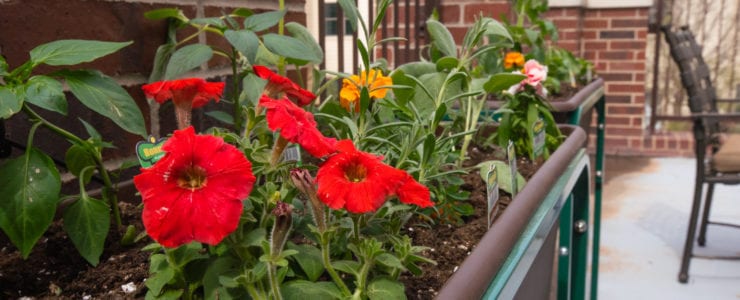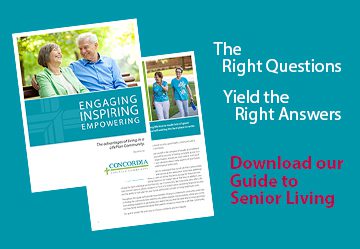
What to Know About 55+ and Independent Living Options in Oklahoma City
Active adults are making up a larger and larger proportion of the population. Over a quarter of Oklahoma, residents are older than 55, with many enjoying longer, more active retirements. As adults enjoy their time away from work, they often find that the best living option isn’t owning a home, it’s independent living in a community designed specifically for active retirees.
These 55+ communities are a type of senior living option that allows adults to enjoy a wide range of amenities as well as support services that help them maximize their abilities. Oklahoma City offers a wide range of 55+ and independent living options that you can choose from. If you’re considering a move to 55+ apartments or communities, here’s what you need to know.
Types of Independent Living Options for Adults 55 and Older
There are several types of 55+ apartments and other living options for older adults, all of which are available in Oklahoma City. Each type provides a different level of care and lifestyle amenities.
Active Adult Communities
These communities are for older adults. In many cases, adults must be 55 or older to live there, although they don’t necessarily need to be retired. Active adult communities may offer housing in the form of apartments, condos, houses, townhouses, or mobile homes. Residents are fully independent and do not need any help with housekeeping, meals, laundry, or transportation.
Independent Living Communities
Independent living communities, also known as retirement communities, cater to active adults without heavy support needs. Older adults can rent or buy their own units and meals, housekeeping, laundry, and transportation services may be included. This option allows older adults to live independently, yet near other people in the same age group. Some independent communities offer social, recreational, and educational activities to help residents explore new interests.
Residents of independent living communities in Oklahoma City can take care of themselves, and do not need help with dressing, bathing, or managing their medications. It may be the perfect choice for those who don’t want to live alone or those who want extra amenities, such as housekeeping services.
Assisted Living
While not technically in the independent living category, assisted living is similar to independent living in that adults are largely self-sufficient. However, assisted living also offers personal care services to the residents that need help with daily activities such as bathing, dressing, or taking medicine. Assisted living may be a good option for older adults who are somewhat active but still need a little help with activities of daily living (ADLs).
Memory Care
Memory care may come up in searches for independent living in Oklahoma City, but it’s much more specialized than an active 55+ apartment community or independent living. Memory care is designed to support those with memory impairments, most common forms of dementia such as Alzheimer’s. Memory care communities provide 24-hour care including help with activities of daily living as well as more of the advanced physical and mental needs that come with memory impairments. Memory care professionals have special training that equips them to deal with dementia or impaired cognition.
Continuing Care Retirement Communities (CCRCs)
A CCRC is able to meet the changing needs of older adults, combining different levels of support in one community. Continuing care retirement communities typically feature a variety of residences on a large campus, where residents can move into units that offer independent living, assisted living, memory care, or even nursing or rehabilitation services. As their needs change, residents can receive greater assistance.
CCRCs work for many older adults because they offer both immediate and long-term benefits. In essence, CCRCs allow older adults to live in one place for the rest of their lives.
4 Myths About 55+ Living
Regardless of the type of type of 55+ living option you’re considering, there are a few common misconceptions you should be aware of.
1. 55+ living options are only for those who need support or cannot take care of themselves.
There are living options designed to support mature adults and help them care for their daily needs. However, many 55+ living communities offer a wide range of services and living options designed for those who are fully self-sufficient.
Independent living is especially geared toward active individuals. To move into an independent living community, you must be healthy and able to care for yourself, as these residences do not offer support with daily activities or nursing. People in 55+ and independent living communities often live more active lives than they would alone, using amenities like housekeeping and maintenance to free up their time to pursue hobbies or travel.
2. 55+ living communities are bland and boring.
Many 55+ apartments and independent living options are designed to enhance active lifestyles. They are built to provide exciting and enriching environments with opportunities to relax, learn and grow.
Depending on the community, you’ll often find luxury accommodations, amenities like swimming pools and salons, as well as social and cultural programs that may include seminars, volunteer opportunities, art appreciation, and fitness classes. Many offer transportation and organized outings, such as trips to see live performances, visit local museums, shop, and participate in seasonal celebrations.
3. It’s better to “age in place.”
While aging in place sounds like an attractive option at first, it often falls short of expectations. By aging in place, adults retain the responsibilities of homeownership, including regular maintenance and upgrades. Many adults also become more isolated as friends and family move away, making the day-to-day less exciting and engaging.
Senior living options, particularly independent living communities, provide an alternative to aging in place. In an independent living community, adults have all maintenance and home care done for them, freeing up their time and money to pursue their interests. Communities also make it easier for residents to get together with friends and family through transportation services, while also connecting residents with new friends and neighbors within the community.
4. “I’ll never need help.”
While many adults believe they can continue living on their own without support, that usually isn’t the case. It is normal and even expected for adults to need some type of support as they age. In fact, seven in 10 adults 65 years old or older will need some sort of long-term care services at some point, according to the U.S. Department of Health and Human Services.
Needing support doesn’t mean you won’t be able to care for yourself. It may just mean you need some help with minor tasks, such as bathing or managing your medications. In that case, you could remain largely independent and leverage assisted living for personalized services.
Find the 55+ Living Option That Fits Your Needs
Fifty-five-plus living options include a wide range of communities, services, and support levels. Independent living is one of the most common and popular options, which allows adults to support themselves while still gaining access to amenities that make their lives more enjoyable.
For more information on 55+ and independent living services, contact us at Concordia, a continuing care retirement community in Oklahoma City. At Concordia, residents enjoy the freedom and comfort of their own beautifully maintained cottages and apartments, along with convenient access to a number of services, amenities, and activities that improve their overall well-being. Our Oklahoma City community provides a full range of quality supportive services, including independent living and neighborhoods with higher levels of support.
Retirement & Planning

